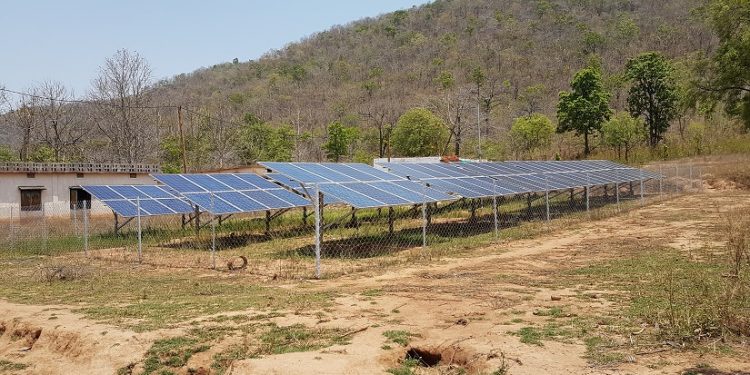Bhubaneswar: With the penetration of solar energy into the remote and hilly areas of the state in the past few years, several of these cut-off villages would be illuminated at night.
Kholibithar in Boden block of Nuapada district is one such example. The village had never seen electricity and the locals were using kerosene lamps to light up their homes when the darkness falls.
The village streets used to wear deserted look at night due to the prevailing darkness and fear of wild animals straying into residential areas from nearby forests. However, things have changed a lot. Now, each household in the village has LED lights and the streets have been equipped with solar lamps.
“With the utilisation of solar energy, the situation has changed a lot. Now, kids do not face any difficulty in studying while there are no hindrances in carrying out household works at night. Now, the villagers have started using electrical devices,” said Rina Chinda, a villager.
A mini solar grid installed in the locality is now catering to the electricity needs of the villagers of Kholibithar. Due to its hilly terrain, electricity connection to the village would have been an uphill task for the authorities concerned.
Kholibithar is not the only village which has been benefitted by the solar energy. The Odisha Renewable Energy Development Agency (OREDA) claims that a total of 24 villages in Komna block of Nuapada district are now using solar energy as part of the rural electrification scheme.
Residents of several hilly and cut-off areas of the state are being encouraged to use solar energy as the efforts to supply thermal or hydroelectricity through wires are facing several hindrances, said sources in the Energy department.
Also read: Where solar power consumers are net producers
According to government data, more than 392 villages in Odisha are using renewable sources of energy while a majority of them have opted for solar energy through de-centralised distribution projects.
According to the latest data of the Central Electricity Authority (CEA), Odisha had capacity to produce 582.04 MW of renewable energy by the end of July while the costal state aims at producing up to 2.2GW of clean energy by 2022.
Manish Kumar, OP






































